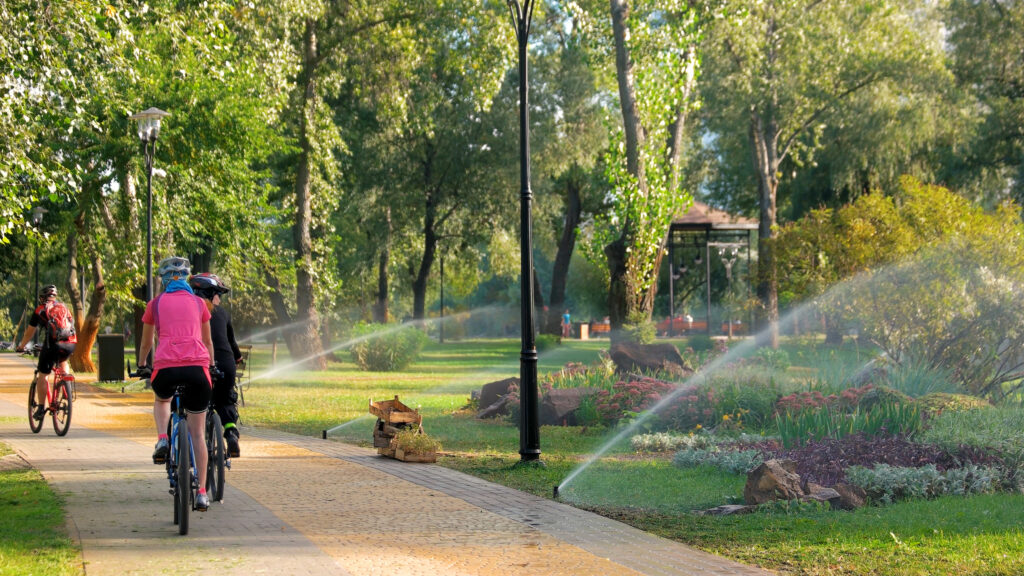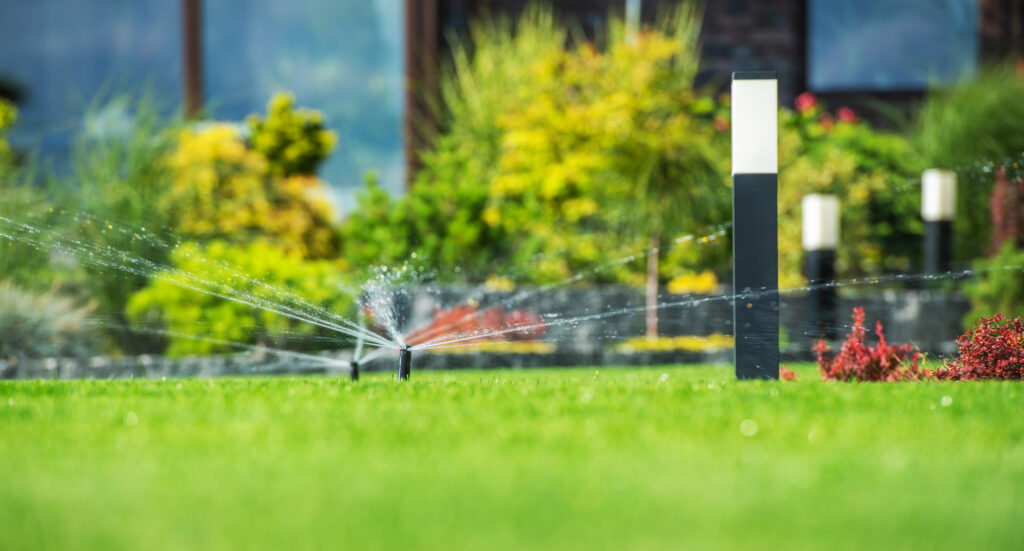As temperatures plummet, your irrigation system faces a significant threat: freezing water. Without proper winterization, water left in your pipes and sprinkler heads can freeze, expand, and cause costly damage. Winterizing your sprinklers not only prevents these issues but also ensures your system is ready to go when spring returns. Whether you’re a homeowner or manage a commercial property, taking the time to winterize your irrigation system is a crucial step in protecting your investment and maintaining the health of your landscape year-round.
What Happens If You Don’t Winterize Your Sprinklers?
Risk of Frozen Pipes and Burst Lines
When temperatures drop, any remaining water in your irrigation system can freeze, leading to pipe expansion and potential bursts. Repairing such damage can be costly and time-consuming.
Damage to Sprinkler Heads and Valves
Water left in sprinkler heads and valves can freeze, causing cracks and malfunctions. These issues may not be apparent until you reactivate the system in spring, potentially leading to uneven watering and further lawn damage.
Increased Risk of Mold and Mildew
Stagnant water in the system can promote mold and mildew growth, which may compromise the integrity of your irrigation components and affect soil health.
How to Properly Winterize Your Sprinklers
Step 1 – Shut Off the Water Supply
Locate and close the main valve supplying water to your irrigation system to prevent additional water from entering the pipes during the winter months.
Step 2 – Drain the Pipes and Sprinkler Heads
There are three primary methods to remove water from your system:
- Manual Drain: Open specific valves to allow water to exit the system naturally.
- Automatic Drain: Utilize systems equipped with automatic drain valves that activate when water pressure drops.
- Blowout Technique: Use compressed air to force remaining water out of the system. This method is highly effective but should be performed with caution to avoid damage.
Step 3 – Insulate Above-Ground Components
Protect exposed pipes, backflow preventers, and other above-ground parts by wrapping them with insulation materials, such as foam covers or insulating tape, to shield them from freezing temperatures.
Step 4 – Check the Controller Settings
Adjust your irrigation controller to the “off” position or set it to a special “winter” mode if available. This prevents the system from activating during the winter and preserves your programmed settings for spring.

Why Professional Winterization is Worth It
Avoid Costly Repairs
Professionals ensure that all water is properly expelled from the system, reducing the risk of freeze damage and the associated repair costs.
Save Time and Effort
Experienced technicians can efficiently winterize your system, allowing you to focus on other seasonal tasks.
Get Ready for an Easy Spring Start-Up
Proper winterization facilitates a seamless reactivation in the spring, ensuring your irrigation system operates at peak performance.
When to Winterize Your Sprinklers
In New Jersey, it’s advisable to winterize your irrigation system before the first hard freeze, typically in late October to early November. Monitoring local weather forecasts can help you determine the optimal time.

Protect Your Irrigation System with Morgan’s Irrigation
At Morgan’s Irrigation, we specialize in comprehensive winterization services to safeguard your system against winter damage. Our team ensures that your irrigation components are thoroughly prepared for the cold season, providing peace of mind and preserving the longevity of your investment.
Contact us today to schedule your winterization service and keep your irrigation system in top condition.
Winterize Sprinklers FAQs
What is the blowout method for winterizing sprinklers?
The blowout method involves using compressed air to force water out of the irrigation system, preventing freeze damage. It’s effective but should be performed carefully to avoid harming system components.
Can I winterize my sprinkler system myself?
While it’s possible to perform basic winterization yourself, hiring professionals ensures thorough and safe preparation, reducing the risk of damage.
How much does professional sprinkler winterization cost?
Costs vary based on system size and complexity. Contact us for a personalized quote tailored to your system’s needs.
What happens if I don’t winterize my sprinklers?
Failure to winterize can lead to frozen pipes, burst lines, and damaged components, resulting in costly repairs and potential landscape damage.
How long does the winterization process take?
Typically, professional winterization takes about 30 to 60 minutes, depending on system size and complexity.
Is winterization necessary for all irrigation systems?
Yes, all irrigation systems in regions with freezing temperatures should be winterized to prevent damage
When should I schedule spring start-up after winterization?
Schedule your spring start-up after the last frost, usually in late March to early April in New Jersey.
Do I need to winterize drip irrigation systems?
Yes, drip irrigation systems also require winterization to prevent freeze damage to lines and emitters.
What materials are best for insulating above-ground components?
Use foam pipe insulation, insulating tape, or specialized covers designed for backflow preventers and exposed pipes.
Can winterization help conserve water?
While winterization primarily protects against freeze damage, maintaining your system ensures efficient operation, which can contribute to water conservation.




